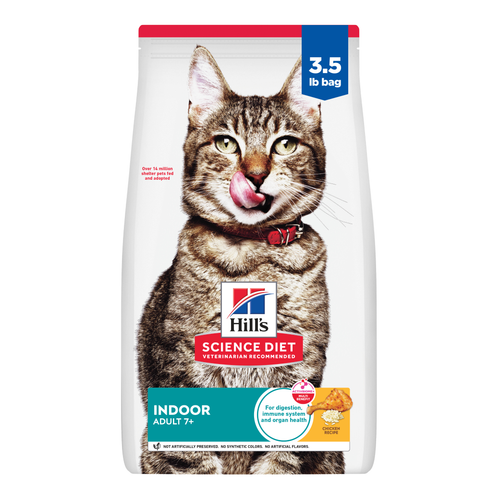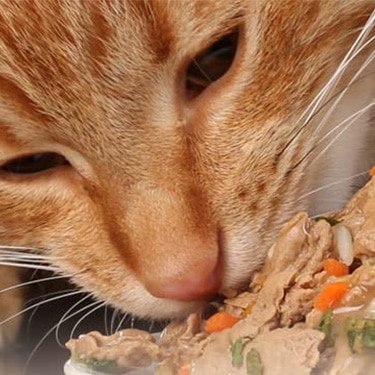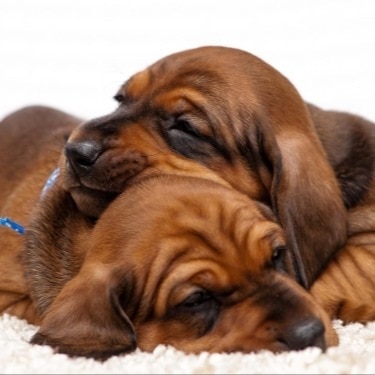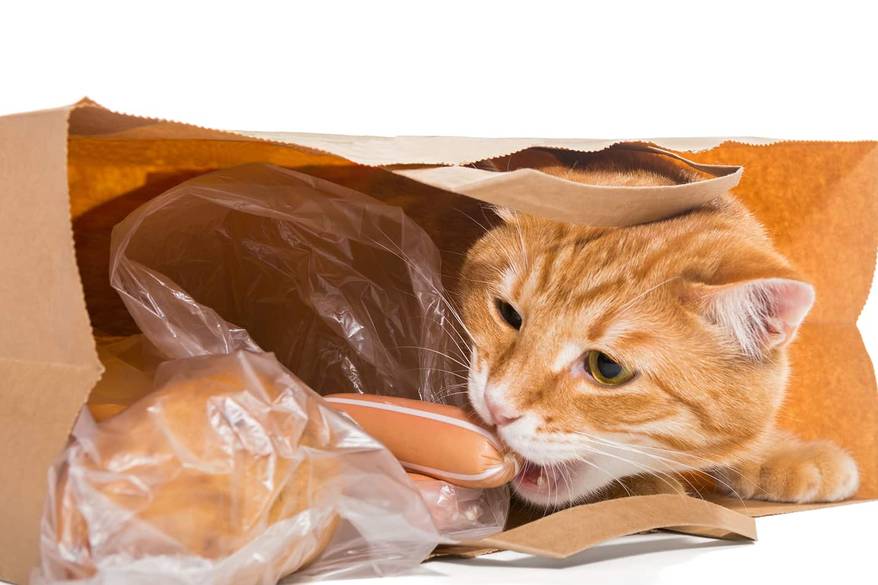
-
Find the right food for your petTake this quiz to see which food may be the best for your furry friend.Find the right food for your petTake this quiz to see which food may be the best for your furry friend.Featured products
 Adult Chicken & Barley Recipe Dog Food
Adult Chicken & Barley Recipe Dog FoodSupports lean muscle and beautiful coat for adult dogs
Shop Now Hill's Science Diet Adult Chicken & Beef Entrée Dog Food
Hill's Science Diet Adult Chicken & Beef Entrée Dog FoodChicken & Beef Entrée in a delicious loaf with complete & balanced nutrition to help keep adult dogs active and healthy
Shop Now Adult Large Breed Chicken & Barley Recipe Dog Food
Adult Large Breed Chicken & Barley Recipe Dog FoodSupports healthy joints, lean muscle, and beautiful coat for large breed dogs
Shop NowFeatured products Adult Turkey & Liver Entrée Cat Food
Adult Turkey & Liver Entrée Cat FoodPrecisely balanced nutrition with the delicious taste of minced turkey & liver to help fuel the energy needs of cats during the prime of their life
Shop Now Adult 7+ Indoor Chicken Recipe Cat Food
Adult 7+ Indoor Chicken Recipe Cat FoodSupports energy level and beautiful fur in mature indoor cats
Shop Now Senior Vitality Adult 7+ Tuna & Vegetables Stew
Senior Vitality Adult 7+ Tuna & Vegetables StewImproves Everyday Ability to Get Up & Go
Shop Now -
Dog
- Dog Tips & Articles
-
Health Category
- Weight
- Food & Environmental Sensitivities
- Urinary
- Digestive
- Joint
- Kidney
-
Life Stage
- Puppy Nutrition
- Adult Nutrition
- Senior Nutrition
Cat- Cat Tips & Articles
-
Health Category
- Weight
- Skin & Food Sensitivities
- Urinary
- Digestive
- Kidney
-
Life Stage
- Kitten Nutrition
- Adult Nutrition
Featured articles How to Properly Mix Wet & Dry Pet Foods
How to Properly Mix Wet & Dry Pet FoodsAn Orange cat eating from a bowl filled with mixed food
Read More What Is Littermate Syndrome? Pet Adoption Guide
What Is Littermate Syndrome? Pet Adoption GuideLearn more about littermate syndrome in dogs and cats and how to successfully navigate adoption and early socialization processes.
Read More The Science Behind Our Love for Pets
The Science Behind Our Love for PetsLearn the scientific reasons why we have such strong connections with our pets, and what science says about the love between humans and our furry friends.
Read More -


It's a familiar scene: you hear a rustling from another room, and when you peek in to investigate, you see your feline friend chewing on a plastic bag, again. You're probably wondering why your cat likes to eat plastic and how you can divert your kitty's attention away from the potential dangers that go along with it.
Why Plastic?
Why does my cat try to eat plastic bags? Essentially, because she likes it. Plastic bags appeal to your cat's senses for a variety of reasons: the crinkle of the plastic, the smell of the food that was contained in it wafting through the air, the smooth surface under her paws. It's a full sensory experience for your little pal.
Kitties also find plastic bags especially alluring, explains the Pet Health Network, because "many bags are also coated in substances such as cornstarch, [and] stearates (salts of stearate acid), or are made of animal by-products such as gelatin, which makes them attractive to cats." Your cat sees a plastic bag and thinks, "Oh, look, a treat!"
Likewise, your cat may chew on bags and other, harder plastic objects, such as straws and milk jug rings, to alleviate anxiety caused by environmental or medical stressors. These can be anything from moving to a new home, a new pet or a new baby in the house, or even illness and aging.

Safety and Prevention
Cats and plastic bags are a potentially dangerous combination for a few reasons. In addition to swallowing a foreign object that may obstruct her airway or cause intestinal distress, your cat could get the plastic handles wrapped around her neck, which could cut off her breathing.
The safest way to prevent these types of accidents is to keep plastic bags out of your cat's reach at all times. Stash extra bags in a closet, the garage, or another cat-free space. This may not be an option, however, if you use the bags to line garbage cans or even her litter box (although you probably don't have to worry about her chewing on a little pan liner because since most healthy cats do not associate their litter box with snack time). If you can't close off the room with the garbage can, invest in a can with a lid that you can tuck the bag under. She can't chew on it if she can't reach it. This motto goes for other harmful playthings, including electrical cords.
If you suspect that something beyond sensory satisfaction is going on, make an appointment with your veterinarian to find out more about the burning question of why your cat is eating plastic. They can rule out any underlying medical conditions such as pica, a disorder that causes animals to eat non-food items such as plastic, rubber, or fabric, says the Animal Behavior College. Pica also could indicate a more serious illness, like feline leukemia. So, it's a good idea to get your kitty checked out as soon as possible.


Tasty Tips
Plastic Alternatives
Separating cats and plastic bags is achieved by stealth diversion tactics. If removing the alluring object from her reach isn't an option, offer her something more desirable. Stimulate her senses with toys like food puzzles or ball mazes. Because her hunting instinct runs deep, she'll appreciate soft cat toys that she can chase around the house. Many cats also appreciate dog toys, particularly the sturdy, durable stuffed animals.
Another option to break up cats and plastic bags is to give your feline pal her own safe chewing spot. Create an area where she can chew on cat treats or toys to her heart's desire. Having her own garden is a healthy, fun alternative to unhealthy and potentially dangerous plastic.
Cat parents can add eating plastic to the list of weird cat behaviors. It's their idiosyncrasies that make kitties so lovable. Just make to discourage snacking on plastic, curb the behavior with safer alternatives, and visit your vet to get to the bottom of her chewing habits.


Christine O'Brien is a writer, mom, and long-time cat parent whose two Russian Blues rule the house. Her work also appears in Care.com, What to Expect, and Fit Pregnancy, where she writes about pets, pregnancy, and family life. Find and follow her on Instagram and Twitter @brovelliobrien.
Related products

Supports energy level and beautiful fur in mature indoor cats

Improves Everyday Ability to Get Up & Go

Delectable chunks with tender chicken smothered in a rich gravy

Precisely balanced nutrition with the delicious taste of minced turkey & liver to help fuel the energy needs of cats during the prime of their life
Related articles

Learn how to litter train a kitten with this guide to potty training, including when to start litter training kittens and troubleshooting tips.

Discover how to train your cat, starting with very basic first steps that both reward good behavior and discourage the bad.

Discover which cat toys games your feline friend might like, and how they are great sources of exercise. Explore our library of articles to learn more.

When you adopt a cat, you don't just gain a best friend; you also save her life. Here's why getting a cat from a local animal shelter makes so much sense.

Put your cat on a diet without them knowing
Our low calorie formula helps you control your cat's weight. It's packed with high-quality protein for building lean muscles, and made with purposeful ingredients for a flavorful, nutritious meal. Clinically proven antioxidants, Vitamin C+E, help promote a healthy immune system.
Put your cat on a diet without them knowing
Our low calorie formula helps you control your cat's weight. It's packed with high-quality protein for building lean muscles, and made with purposeful ingredients for a flavorful, nutritious meal. Clinically proven antioxidants, Vitamin C+E, help promote a healthy immune system.

